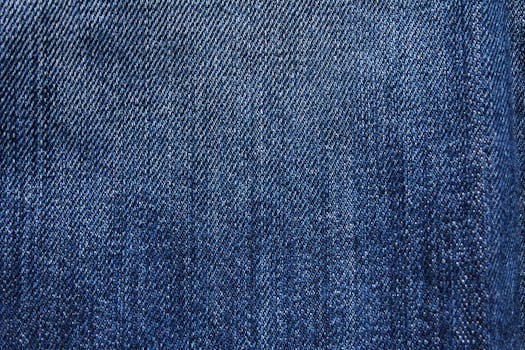Light up clothes are no longer a futuristic fantasy; they’re a vibrant reality. From dazzling LED dresses to subtly illuminated jackets, wearable technology is transforming the fashion landscape. This blog post explores the exciting world of light up clothing, delving into its history, technology, applications, and future trends.
A Brief History of Illuminated Fashion
The concept of incorporating light into clothing dates back further than you might think. While modern LED technology has revolutionized the field, the idea of illuminating garments has existed for centuries. Early examples include using reflective materials or even incorporating fireflies into costumes for theatrical performances. However, the real turning point came with the development of electroluminescent (EL) wire and, more recently, advancements in LED technology, making light up clothes more practical, durable, and accessible.
The Technology Behind the Glow
Light up clothing relies on various technologies to achieve its luminous effects. The most common include:
- LEDs (Light Emitting Diodes): LEDs are small, energy-efficient light sources that can be easily integrated into fabric. They come in a wide range of colors and can be programmed to create various patterns and animations.
- EL Wire (Electroluminescent Wire): EL wire is a flexible, glowing wire that emits light when an alternating current is applied. It’s often used for outlining shapes and creating linear designs on clothing.
- Fiber Optics: Fiber optic strands can be woven into fabrics to create subtle, glowing effects. Light is transmitted through the fibers, creating a soft, diffused illumination.
- Light Reactive Fabrics: These fabrics don’t actively emit light but react to external light sources. They reflect light in unique and eye-catching ways, often using retro-reflective materials similar to those found in safety vests.
The power source for these illuminated garments is typically a small battery pack, often rechargeable, that can be discreetly hidden within the clothing. The complexity of the wiring and control systems can vary depending on the desired effects, ranging from simple on/off switches to sophisticated microcontrollers that allow for customized light patterns and animations.
Applications of Light Up Clothes
Light up clothes are finding applications in a diverse range of fields, including:
- Fashion and Entertainment: This is perhaps the most visible application, with light up dresses, jackets, and accessories appearing on runways, in music videos, and at festivals. They add a unique and eye-catching element to any outfit.
- Safety and Visibility: Light up clothing can significantly enhance visibility in low-light conditions, making it ideal for runners, cyclists, construction workers, and others who need to be easily seen.
- Performance Art and Dance: Illuminated costumes can create stunning visual effects on stage, adding another dimension to performances.
- Medical Applications: Researchers are exploring the use of light up clothing for therapeutic purposes, such as light therapy for skin conditions or mood disorders.
- Interactive Art Installations: Light up clothing can be used to create interactive art installations, where the clothing responds to movement or other stimuli.
Benefits of Wearing Light Up Clothes
Beyond their aesthetic appeal, light up clothes offer several practical benefits:
- Increased Visibility: As mentioned earlier, they greatly improve visibility in low-light conditions, enhancing safety.
- Enhanced Self-Expression: Light up clothes allow individuals to express their creativity and personality in a unique and attention-grabbing way.
- Novelty and Fun: They add a sense of fun and excitement to any occasion.
- Potential Health Benefits: Research suggests that light therapy delivered through clothing could have therapeutic benefits for certain conditions.
Challenges and Considerations
Despite their many advantages, light up clothes also present certain challenges:
- Durability: Integrating electronic components into clothing can make them more delicate and prone to damage.
- Washability: Washing light up clothes can be tricky, as the electronic components may be damaged by water. Special care instructions are typically required.
- Battery Life: The battery life of light up clothes can vary depending on the technology used and the intensity of the illumination.
- Cost: Light up clothes can be more expensive than traditional clothing due to the added technology.
The Future of Light Up Clothing
The future of light up clothing is bright, with ongoing research and development leading to more advanced and sophisticated designs. Some potential future trends include:
- Smart Textiles: Integrating sensors and microcontrollers into clothing to create “smart” garments that can monitor vital signs, track movement, or even respond to environmental changes.
- Sustainable Materials: Using sustainable and eco-friendly materials in the production of light up clothes to reduce their environmental impact.
- Customizable Illumination: Developing technologies that allow users to customize the color, pattern, and intensity of the illumination in their clothing.
- Seamless Integration: Creating light up clothes that are more comfortable and seamless, with electronic components that are less noticeable.
Conclusion
Light up clothes represent a fascinating fusion of fashion and technology, offering a unique blend of style, safety, and self-expression. While challenges remain, the ongoing advancements in materials and electronics promise an exciting future for illuminated fashion. As the technology continues to evolve, we can expect to see even more innovative and practical applications of light up clothing in the years to come.
